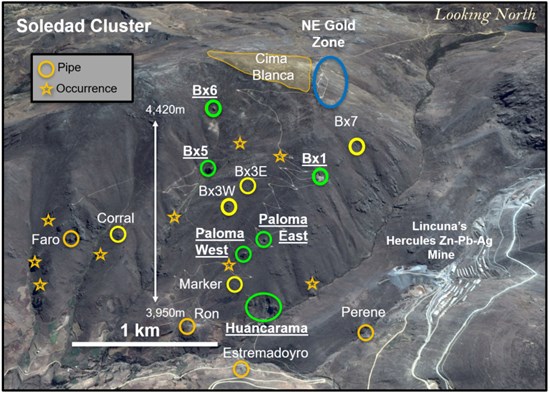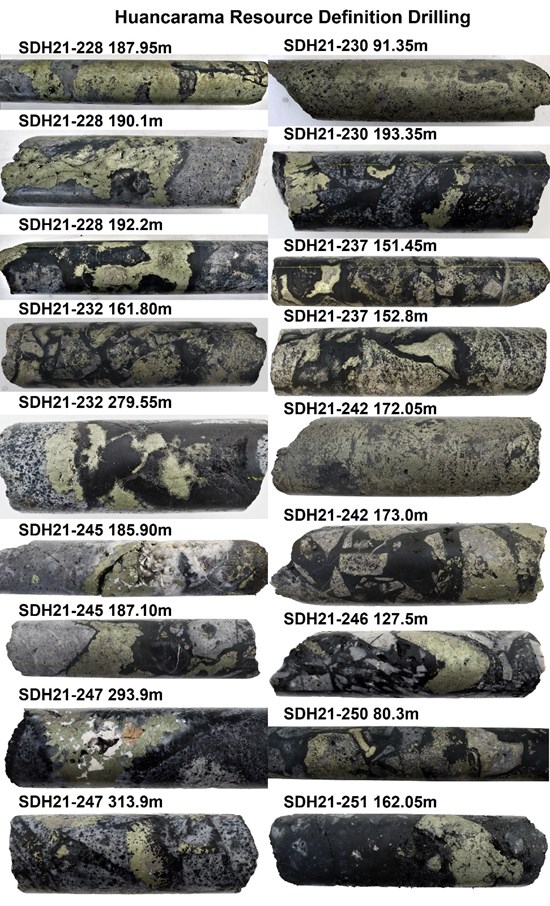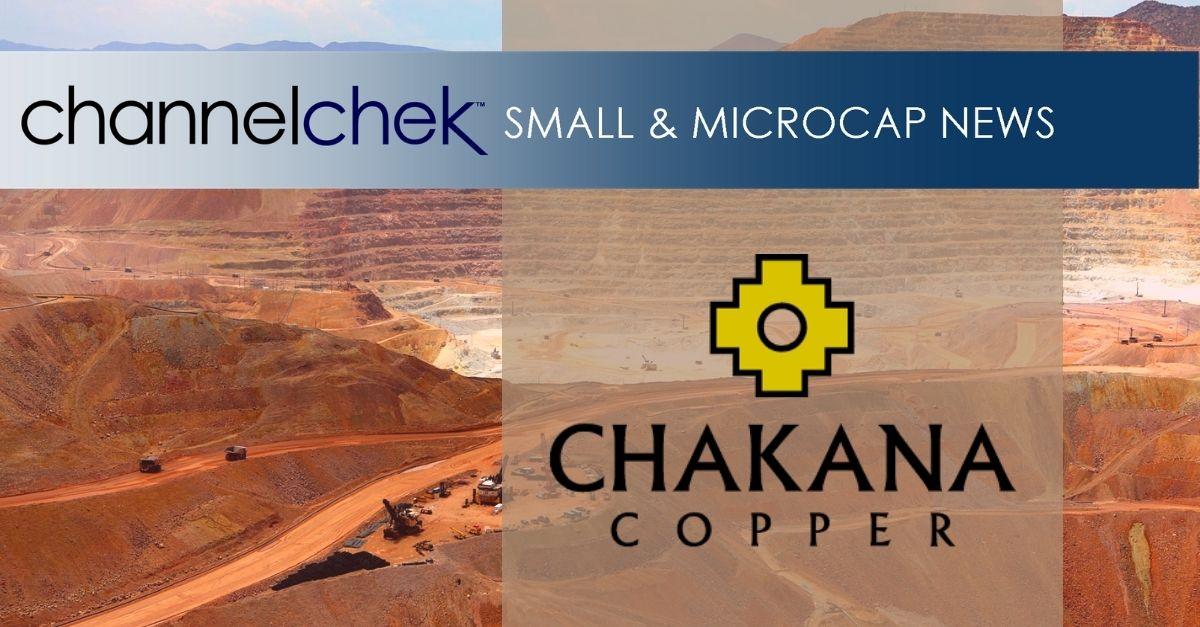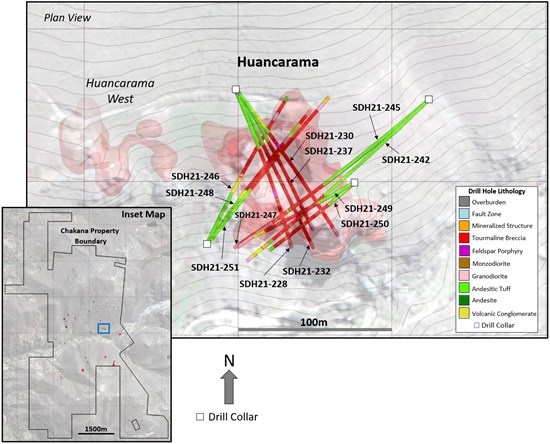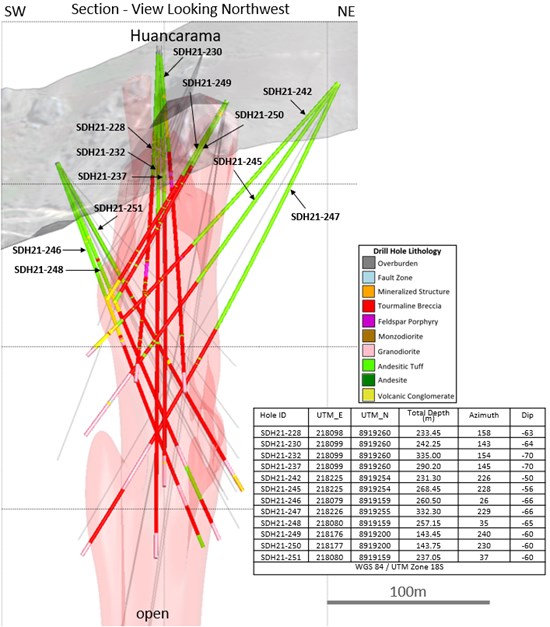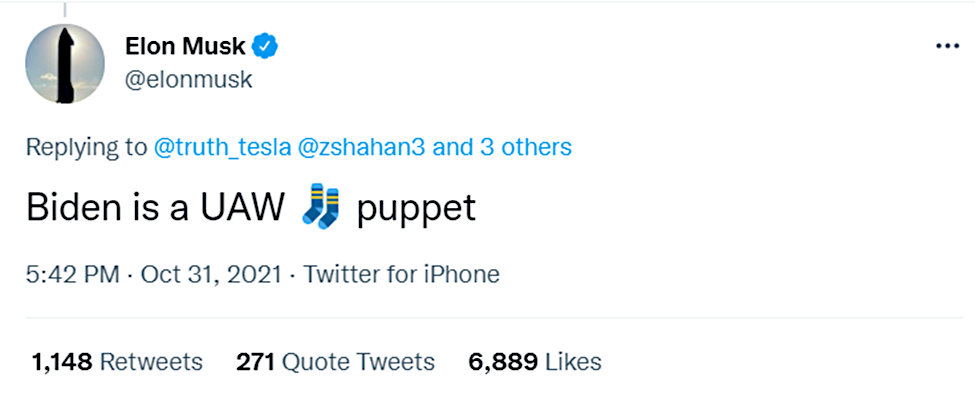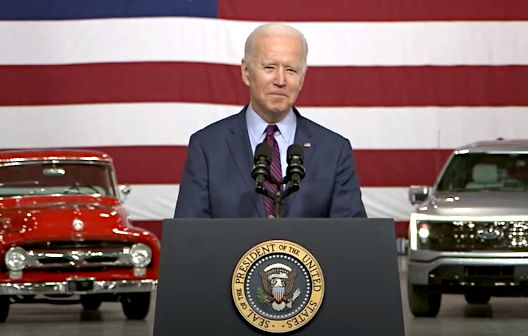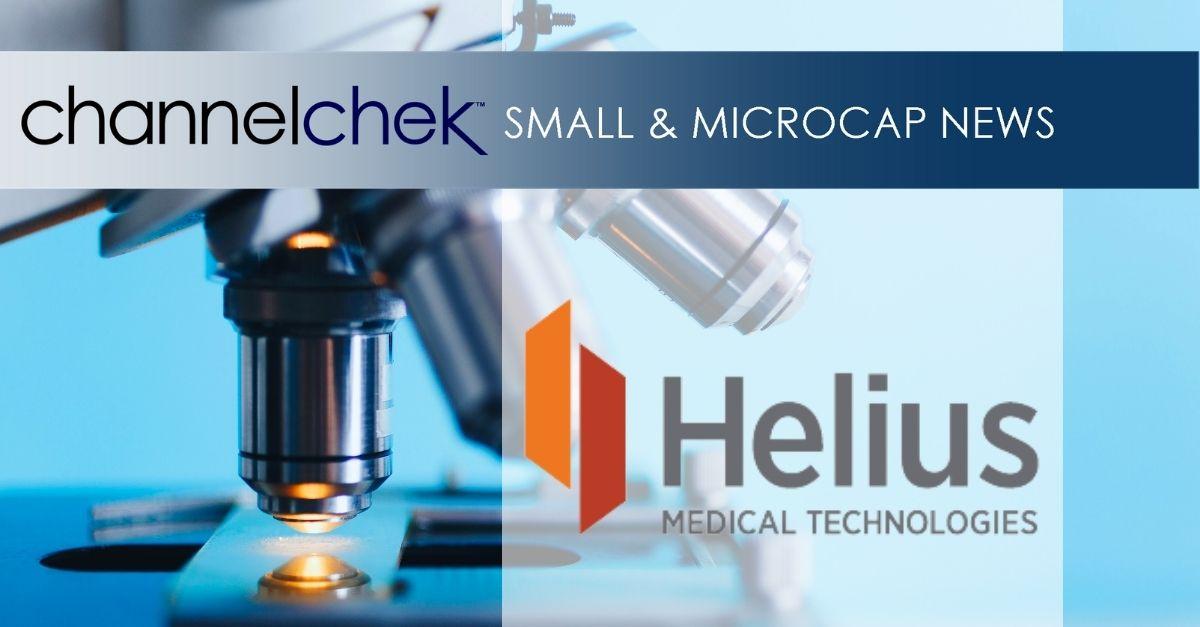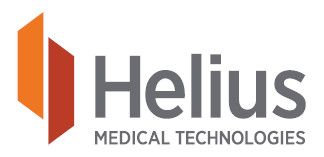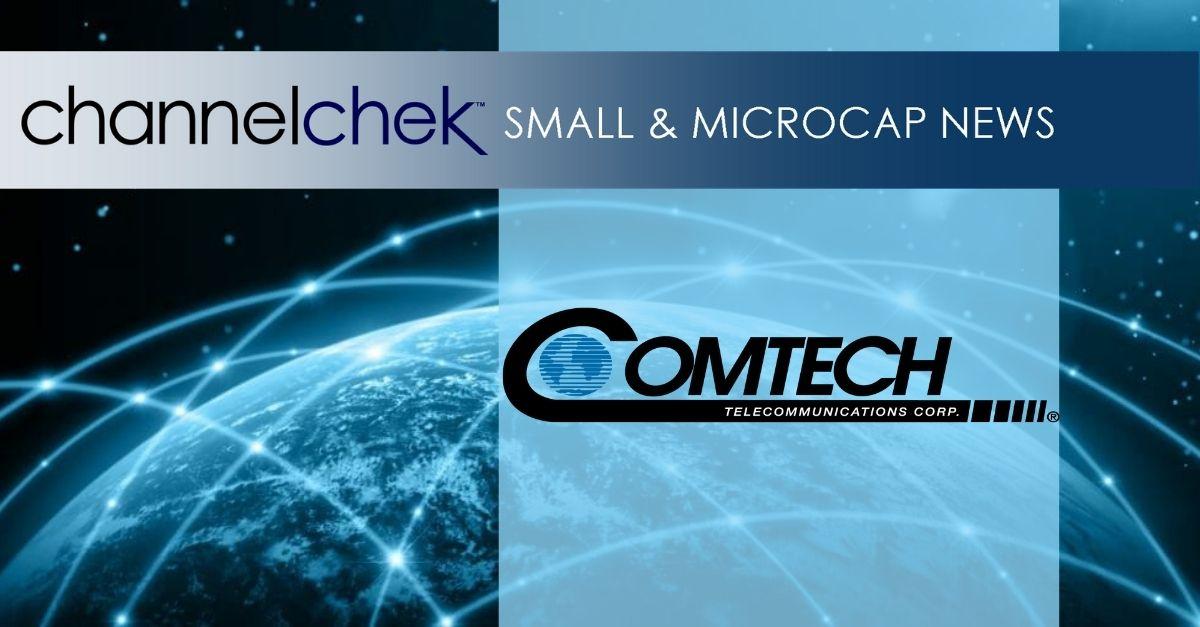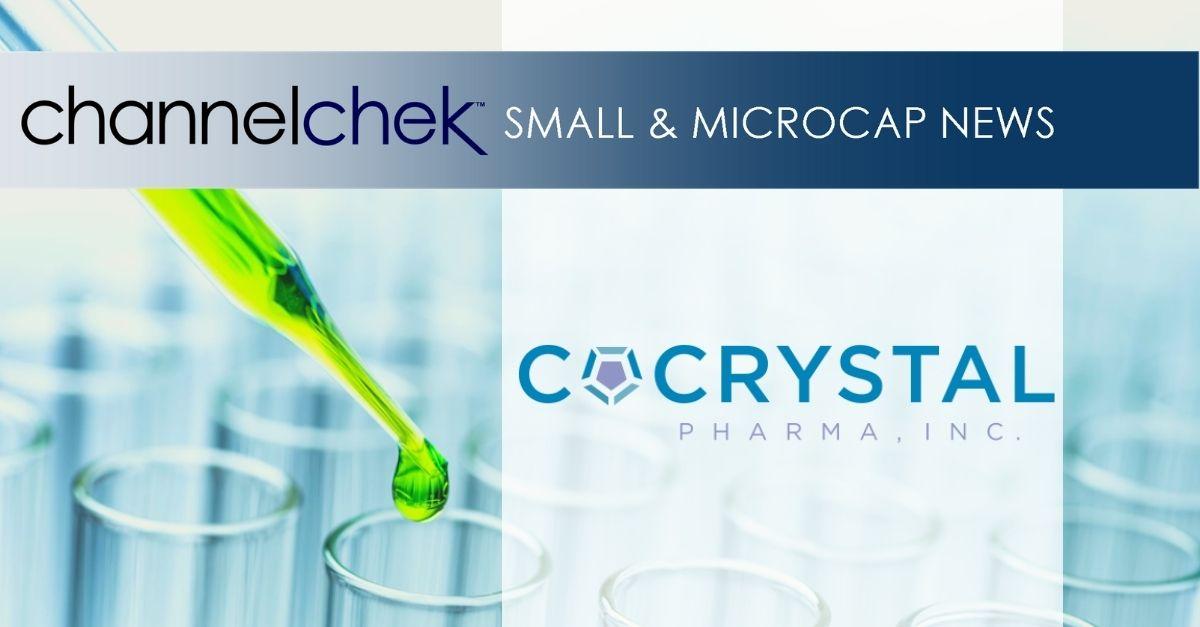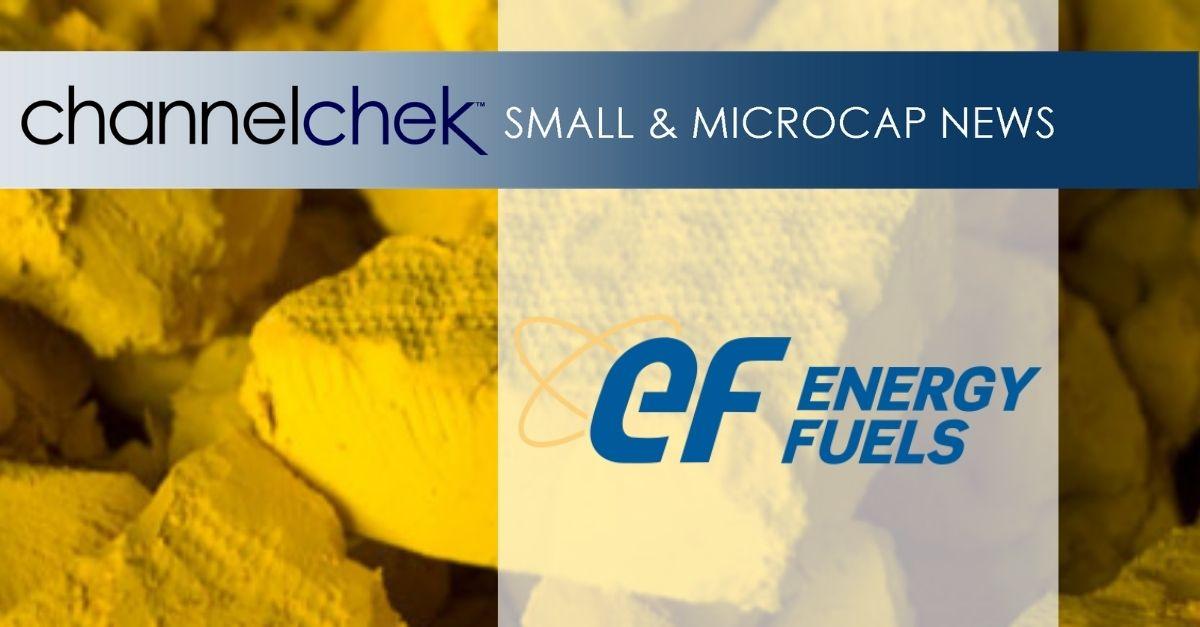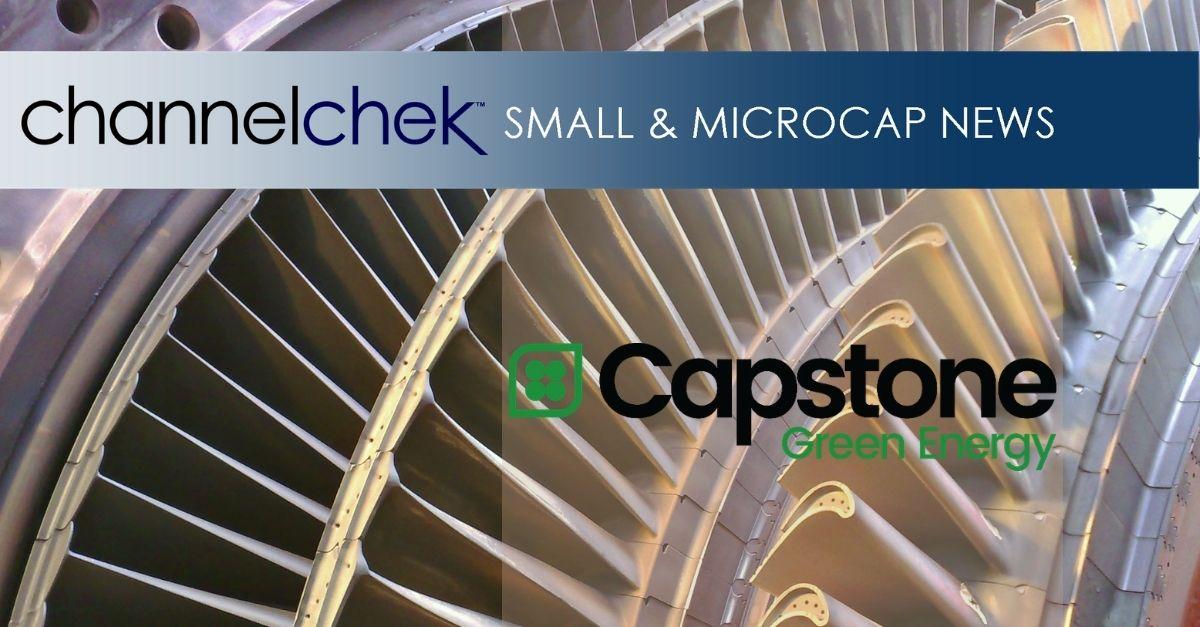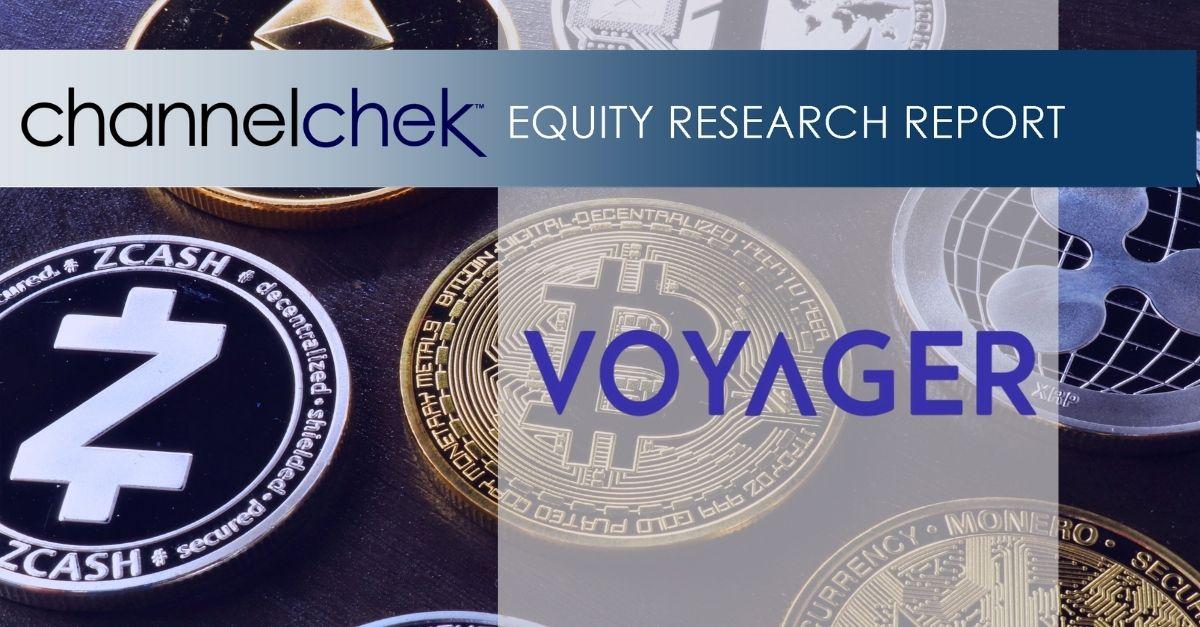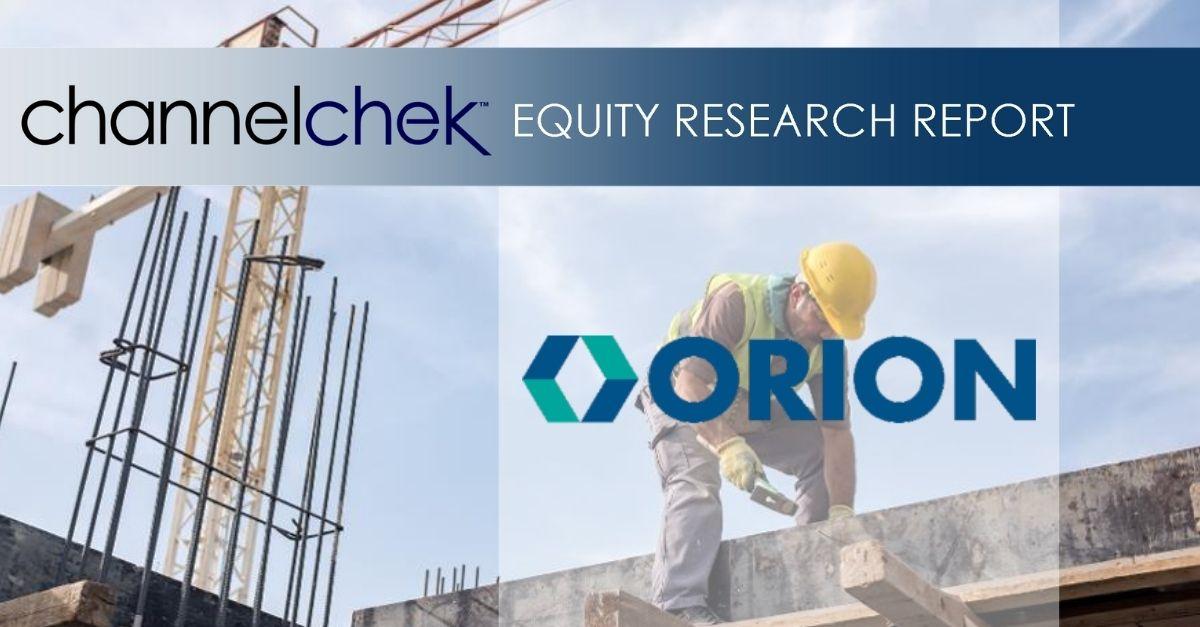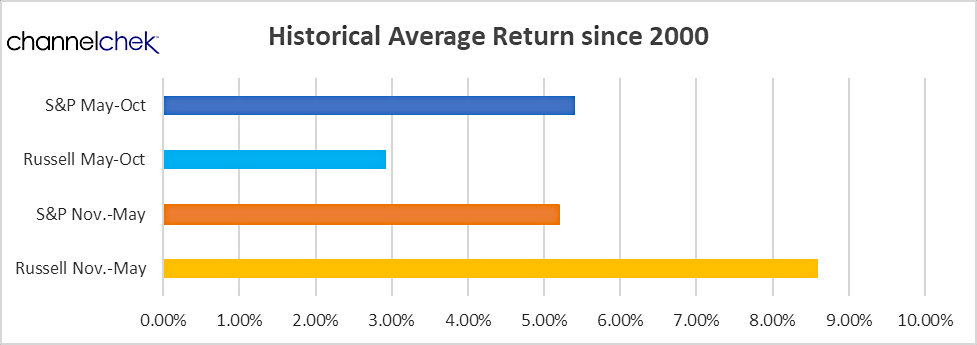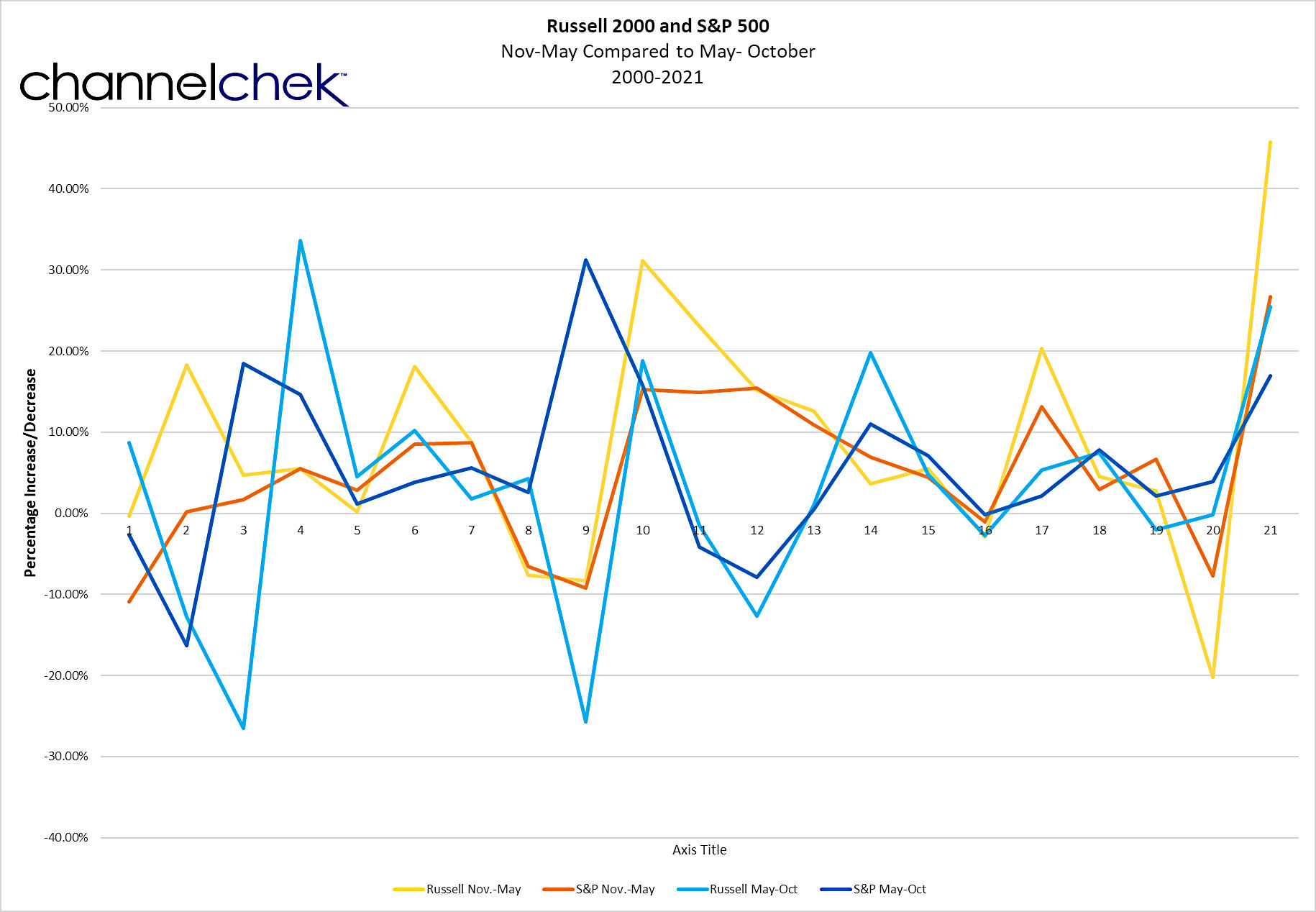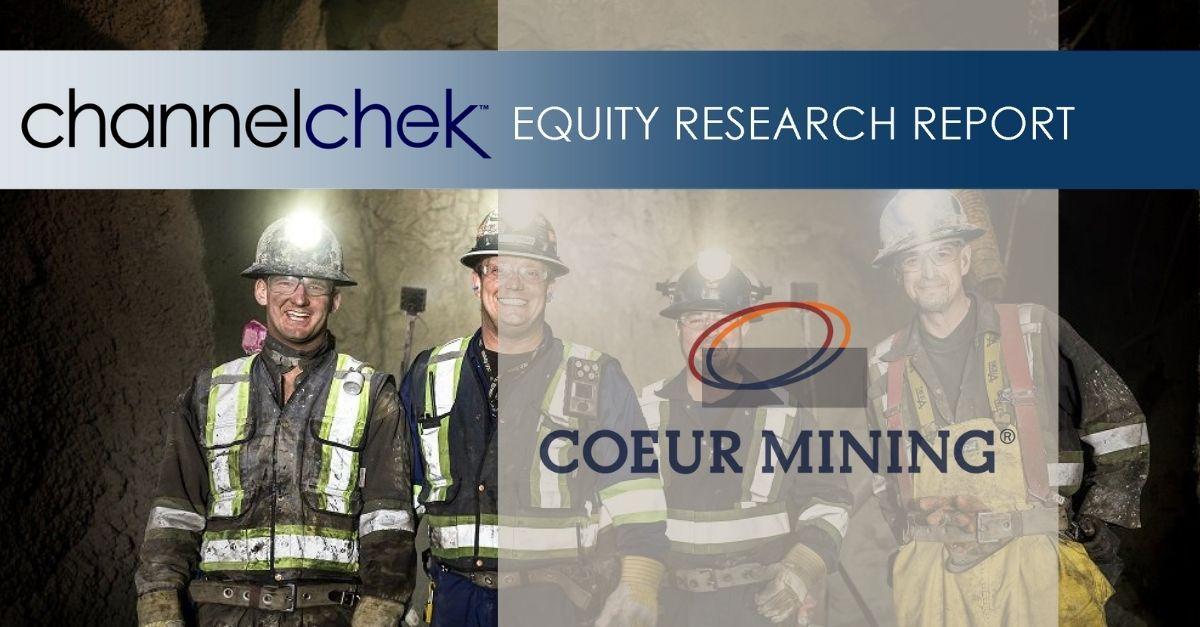Webcast on November 2, 2021
LAKEWOOD, Colo., Nov. 1, 2021 /CNW/ – Energy Fuels Inc. (NYSE American: UUUU) (TSX: EFR) (“Energy Fuels” or the “Company”) today reported its financial results for the quarter ended September 30, 2021. The Company’s quarterly report on Form 10-Q has been filed with the U.S. Securities and Exchange Commission (“SEC“) and may be viewed on the Electronic Document Gathering and Retrieval System (“EDGAR“) at www.sec.gov/edgar.shtml, on the System for Electronic Document Analysis and Retrieval (“SEDAR“) at www.sedar.com, and on the Company’s website at www.energyfuels.com. Unless noted otherwise, all dollar amounts are in U.S. dollars.
Highlights:
- At September 30, 2021, the Company had a very robust balance sheet with $132.8 million of working capital, including $100.8 million of cash and marketable securities and $29.3 million of inventory. At current commodity prices, the Company’s product inventory has a value of $46.9 million.
- During the quarter ended September 30, 2021, the Company incurred a net loss of $8.0 million, due primarily to increased development expenditures and other costs incurred in ramping up our mixed rare earth element (“REE“) carbonate (“RE Carbonate“) production at the White Mesa Mill in Utah (the “Mill“).
- Between June 30, 2021 and October 15, 2021, the price of uranium rose 42%, mainly due to the entry of financial entities into the market who are buying uranium on the spot market with a stated intent to hold the inventory for the long-term.
- With several existing uranium mines on standby and significant inventories of Company-produced, U.S.-origin uranium available for sale, the Company is actively seeking out opportunities to supply uranium to nuclear utilities under term contracts while also evaluating the potential to sell some inventory on the spot market.
- The Company is in the process of ramping up to expected commercial-scale production of RE Carbonate in Q1-2021, and began deliveries of this intermediate REE product to a separation facility in Europe in July 2021.
- The Company is currently in active discussions with several global suppliers of natural monazite ore to supply feed for this growing REE initiative, which has the potential to include the production of separated REE oxides in the future, subject to licensing, successful commissioning, and prevailing market conditions.
- On October 27, 2021, the Company completed the sale of a package of non-core conventional uranium projects located in Utah and Colorado to Consolidated Uranium Inc. (“CUR”). Based on CUR’s closing share price of Cdn$2.95 on October 26, 2021, the U.S.-to-Canadian exchange rate as of closing, and assuming full performance of the stipulated deferred cash payments, the current value of this divestment is approximately $35.1 million, plus additional production payments totaling up to Cdn$5 million payable upon commencement of production from the projects in the future.
- On July 29, 2021, the Company entered into a strategic alliance agreement with RadTran, LLC, a private technology development company, to evaluate the recovery of thorium and potentially radium from the Company’s RE Carbonate and uranium process streams for use in the production of medical isotopes for emerging targeted alpha therapy (“TAT“) cancer therapeutics.
- On September 16 and 17, 2021, the Company hosted mining, environmental and political heavyweights at an Open House at its White Mesa Mill in Utah to showcase its uranium and REE activities. Utah Senators Mike Lee and Mitt Romney, Congressman John Curtis, Constantine Karayannopoulos, CEO Neo Performance Materials, Dr. Kathryn Huff, Principal Deputy Assistant Secretary for Nuclear Energy in the U.S. Department of Energy and others, delivered remarks in person or virtually.
- At the Open House, the Company also announced the establishment of its San Juan County Clean Energy Foundation, a fund specifically designed to contribute to the local communities, including Tribal communities, surrounding the Company’s White Mesa Mill in southeast Utah.
Mark S. Chalmers, Energy Fuels’ President and CEO, stated:
“Energy Fuels continues to make rapid progress toward positioning our White Mesa Mill as America’s “Critical Minerals Hub,” by maintaining the Mill’s key uranium and vanadium production capabilities while further diversifying our portfolio to include rare earth elements production – an exciting and strategically important move both domestically and for the Company. We also continue to watch the uranium markets closely in order to best evaluate our opportunities to capitalize on recent price increases and market improvements.
“After many years of low prices, uranium markets have recently sprung to life with significant price action. Between mid-August and mid-September, the spot price of uranium rose a staggering 66%, mainly due to significant spot purchases by financial entities who have stated their intention to hold the uranium for several years. Nuclear utilities, traders, and others have had access to plentiful uranium on the spot market for the past several years and, in many cases, depended on the spot market to meet their short- and mid-term fuel requirements and delivery commitments. These new purchasers of uranium are removing material from the spot market, thereby potentially creating a fundamental shift in the market by rapidly increasing demand. One could liken these entities to another major, new nuclear utility entering the scene and consuming large quantities of uranium, as this material is not expected to be available for sale in the foreseeable future, if ever. We believe this new dynamic could create opportunities for Energy Fuels to enter into long-term supply contracts for a portion of our production with nuclear utilities at prices, quantities and other terms that generate sufficient project cashflow, all while keeping the majority of our production leveraged to further potential increases in uranium prices.
“Earlier this year, Energy Fuels took major strides toward becoming a major player in the global rare earth element space. As I mentioned before, we are currently producing mixed rare earth carbonate from U.S.-sourced natural monazite sand at our White Mesa Mill. Because our product is ready for separation into individual rare earth oxides without further processing, we are currently producing an intermediate rare earth product in a more advanced form than any other U.S. company. We will be receiving additional shipments of natural monazite sand in Q4-2021 and throughout 2022, and we are in advanced discussions with several monazite suppliers around the world to secure a diverse supply of feed for this exciting initiative. We are also very excited about our Strategic Alliance with RadTran, which has the potential to help produce isotopes from our existing RE Carbonate and uranium process streams for use in cancer therapeutics that can improve human health and, ultimately, save lives. These two initiatives, which are complementary to our core uranium business, are examples of the unique and valuable capabilities of the White Mesa Mill.
“Our distinct competitive advantage over our peers is that we have the existing licenses and permits, longstanding experience and expertise, and unique facilities and projects in a diverse number of locations that, together, are able to recover, manage, process and dispose of radionuclide-bearing materials. This is why we are the number one uranium producer in the U.S. and why we believe we have the strong potential to become one of the lowest-cost, non-Chinese rare earth producers in the world. These unique capabilities also allow us to produce vanadium when market conditions warrant, execute our industry-leading, low-cost recycling programs, and pursue our innovative initiative with RadTran to recover thorium and radium for use in the medical isotopes needed for emerging cancer therapies. We will continue to seek new ways to leverage our unique capabilities with the ultimate goals of generating substantial free cashflow and creating shareholder value.”
Webcast at 4:00 pm ET on November 2, 2021:
Energy Fuels will be hosting a video webcast on November 2, 2021 at 4:00 pm ET (2:00 pm MT) to discuss its Q3-2021 financial results, uranium strategy, rare earth production and other corporate initiatives. To join the webcast and access the presentation and viewer-controlled webcast slides, please click on the link below:
Webcast Link
If you would like to participate in the webcast and ask questions, please dial in to 1-888-664-6392 (toll free in the U.S. and Canada).
A link to a recorded version of the proceedings will be available on the Company’s website shortly after the webcast by calling 1-888-390-0541 (toll free in the U.S. and Canada) and by entering the code 036877#. The recording will be available until November 16, 2021.
Selected Summary Financial Information:
|
$000’s, except per share data
|
Nine months ended
September 30, 2021
|
Nine months ended
September 30, 2020
|
|
|
|
|
|
Total revenues
|
$ 1,524
|
$ 1,274
|
|
|
|
Gross profit (loss)
|
796
|
(370)
|
|
|
|
Operating Loss
|
(25,570)
|
(23,624)
|
|
|
|
Net income (loss) attributable to the company
|
(29,562)
|
(22,699)
|
|
|
|
Basic and diluted loss per share
|
(0.21)
|
(0.19)
|
|
|
|
$000’s
|
As at September 30, 2021
|
As at December 31, 2020
|
|
|
|
|
|
Financial Position:
|
|
|
|
|
|
Working capital
|
$ 132,793
|
$ 40,158
|
|
|
|
Property, plant and equipment, net
|
22,211
|
23,621
|
|
|
|
Mineral properties, net
|
83,539
|
83,539
|
|
|
|
Total assets
|
267,283
|
183,236
|
|
|
|
Total long-term liabilities
|
13,877
|
13,376
|
|
|
Financial Discussion:
At September 30, 2021, the Company had $132.8 million of working capital, including $100.8 million of cash and marketable securities and $29.3 million of inventory, including approximately 691,000 pounds of uranium and 1,672,000 pounds of high-purity vanadium, both in the form of immediately marketable product. The current spot price of U3O8, according to TradeTech, is $47.00 per pound (up 55% in 2021), and the current mid-point spot price of V2O5, according to Metal Bulletin, is $8.00 per pound (up 48% in 2021). Based on today’s spot prices, the Company’s uranium, vanadium, and RE Carbonate inventories have a current market value of $32.5 million, $13.4 million, and $1.0 million respectively, totaling $46.9 million.
Following the quarter-end, on October 27, 2021, the Company completed the sale of certain non-core conventional assets to CUR. In addition to receiving $2 million cash at closing, the Company also now holds 19.9% of the outstanding shares of CUR having a current value of approximately $28.3 million.
During the quarter ended September 30, 2021, the Company incurred a net loss of $8.0 million, compared to a net loss of $8.9 million for the third quarter of 2020, and a net loss of $29.7 million year-to-date compared to $22.8 million during the first nine months of 2020. The increased net losses in 2021 are due primarily to increased development expenditures incurred in ramping up our RE Carbonate production at the Mill of $1.8 million during the quarter and $6.1 million year-to-date, and to underutilized capacity production costs applicable to rare earth concentrates during the quarter and year-to-date of $0.45 million. The underutilized capacity production costs are due to low throughput rates as the Mill ramps-up to commercial-scale production. To date, the Mill has focused on producing commercially salable RE Carbonate at low throughput rates and has been very pleased with the resulting product it is shipping for separation. The Mill expects to increase its throughput rates as its supplies of monazite sands increase. The Company is in advanced discussions with several monazite suppliers to secure additional supplies of monazite sands, and once secured, we expect these additional supplies will result in sufficient throughput to reduce underutilized capacity production costs and allow the Company to realize its expected margins on a continuous basis.
Commencement of Rare Earth Carbonate Deliveries in 2021:
In July, the Company commenced deliveries of RE Carbonate to the Silmet rare earth separations facility in Estonia, owned by Neo Performance Materials (“Neo“), creating a new United States-to-Europe rare earth supply chain. During the initial ramp-up of RE Carbonate production, the Company produced approximately 270 tonnes of RE Carbonate (containing approximately 120 tonnes of total rare earth oxides (“TREO“)) from natural monazite sands mined from heavy mineral sand (“HMS“) in Georgia, USA by The Chemours Company. Subject to final verification, initial analyses indicate that Energy Fuels’ RE Carbonate meets or surpasses the specifications of Neo’s separation facility.
Monazite sand is widely recognized as one of the most valuable rare earth minerals in the World, due to its superior distributions of magnetic REEs needed for various clean energy, defense and other advanced technologies. Monazite from the southeast U.S. typically contains roughly 55% TREO of which the magnetic elements neodymium and praseodymium (“NdPr”) comprise approximately 22% of the TREO. NdPr are among the most valuable of the rare earth elements, as they are the key ingredient in the manufacture of high-strength permanent magnets that are essential to the lightweight and powerful motors required in electric vehicles, permanent magnet wind turbines used for renewable energy generation, and a variety of other modern technologies, including, mobile devices and defense applications. U.S. Monazite also contains approximately 14.4% “heavy” rare earths on a TREO basis, including roughly 1.5% dysprosium and terbium which have additional important magnet and national defense applications.
Natural monazite sand is currently recovered as a low-cost byproduct of HMS operations in the U.S. and elsewhere in the world. The historic challenge with monazite is that it contains higher concentrations of natural uranium, thorium and other radionuclides relative to other minerals, thereby requiring specific licenses and specialized technical capabilities to handle and process. Energy Fuels currently holds the required licenses, and in 2021 we unlocked the value of this domestic resource. Energy Fuels’ commercial-scale production of RE Carbonate from U.S.-mined natural monazite sand positions Energy Fuels as the only company in North America currently producing a monazite-derived, enhanced rare earth material, and the only company in North America producing an intermediate rare earth product ready for separation without further processing.
The Company and Neo also announced the signing of a definitive supply agreement under which Energy Fuels will ship all or a portion of its RE Carbonate to Neo’s Silmet facility for processing into separated rare earth materials used in rare earth permanent magnets and other rare earth-based advanced materials. We believe the Company is well on its way to creating a new, low-cost, fully integrated U.S. rare earth supply chain that meets the highest global standards for environmental protection, sustainability and human rights, and that allows for source validation and tracking from mining through final end-use applications for manufacturers in North America, Europe, Japan and other nations.
We are currently scoping the potential to produce separated REE oxides using proven solvent extraction (“SX”) technology that we have utilized for the recovery of uranium and vanadium over the past 40+ years. We are also evaluating moving farther down the REE supply chain to produce certain rare earth metals, alloys and other advanced REE products.
Sale of Non-Core Conventional Assets to International Consolidated Uranium Inc:
On October 27, 2021, the Company completed the sale of a portfolio of non-core conventional uranium projects located in Utah and Colorado, including the Daneros mine, the Tony M mine, the Rim mine, the Sage Plain project, and several U.S. Department of Energy leases, to CUR. In addition, the Company and CUR entered into toll-milling and operating agreements with respect to the properties. The consideration payable by CUR to Energy Fuels included $2 million cash payable at closing, such number of shares that results in Energy Fuels holding 19.9% of the outstanding CUR common shares immediately after closing, Cdn$6 million of deferred cash payable over time, and up to Cdn$5 million of deferred cash payable on the commencement of commercial production at the properties. Through this accretive disposition, Energy Fuels believes the value of these high-quality, permitted, and past-producing mines can be unlocked for Company shareholders, while also allowing the Company to cut standby costs, earn management fees, and potentially realize toll milling fees in the future. Based on the October 26, 2021 CUR share price, exchange rates and assuming full performance of the agreement, the current value of this divestment is approximately $35.1 million, plus additional payments totaling up to Cdn$5 million payable upon commencement of production from the projects in the future.
Collaboration with RadTran, LLC on Recovering Medical Isotopes for Advanced Cancer Therapies:
On July 28, 2021, the Company announced the execution of a Strategic Alliance Agreement with RadTran, LLC, a technology development company focused on closing critical gaps in the procurement of medical isotopes for emerging TAT cancer therapeutics and other applications. Under this strategic alliance, the Company will evaluate the feasibility of recovering Th-232, and potentially Ra-226 from its existing uranium and RE Carbonate process streams at the Mill and, together with RadTran evaluate the feasibility of recovering Ra-228 from the Th-232 and Th-228 from the Ra-228 at the Mill using RadTran technologies. The recovered Ra-228, Th-228 and potentially Ra-226 would then be sold to pharmaceutical companies and others to produce Pb-212, Ac-225, Bi-213, Ra-224 and Ra-223, which are the leading medically attractive TAT isotopes for the treatment of cancer. Existing supplies of these isotopes for TAT applications are in short supply, and methods of production are costly and currently cannot be scaled to meet the demand as new drugs are developed and approved. This is a major roadblock in the research and development of new TAT drugs as pharmaceutical companies wait for scalable and affordable production technologies to become available. Under this exciting initiative, the Company has the potential to recycle valuable isotopes from its existing process streams, that would otherwise be lost to disposal, for use in the treatment of cancer.
Market Conditions
Uranium prices improved significantly during the quarter, while also exhibiting considerable volatility. Between June 30, 2021 and September 30, 2021, uranium prices rose from $32.40 per pound to $42.20 per pound (30% increase), reaching a high of $50.50 on September 17 and a low of $30.50 on August 13. Subsequent to the quarter, the uranium price dropped to $37.40 on October 8, then rose again to $46.00 on October 15. The outlook for uranium continues to improve, as demand continues to outpace supplies. In particular, financial intermediaries, including the Sprott Physical Uranium Trust (“SPUT”), entered the market to purchase uranium and build inventories for a long-term hold. On October 18, it was announced that a new Kazakh-led uranium fund was going to be created to similarly buy and hold uranium in inventory. Energy Fuels holds 691,000 pounds of uranium in inventory that we recently produced at our own facilities in the U.S. through our low-cost alternate feed material production, which is among the lowest-cost uranium production in the world today. In addition, the Company holds another approximately 252,000 pounds of U3O8 contained in stockpiled alternate feed material and ore inventory at the Mill that can be recovered relatively quickly. Between the finished inventory and stockpiled inventory, the Company holds over 900,000 pounds of U3O8 that can be sold immediately or in the near-term.
Vanadium prices were flat during the quarter, beginning the quarter at $8.75 per pound V2O5 and ending the quarter at $8.78 per pound V2O5. An improving global economy, coupled with political unrest in South Africa and other factors, has caused vanadium prices to rise nearly 63% this year, from $5.40 per pound as of December 25, 2020 to $8.78 per pound as of September 24, 2021. Vanadium is a valuable clean energy metal, historically used in steel, master alloys, and chemicals. It is also seeing considerable interest in emerging grid-scale battery technologies used to store renewable energy. Energy Fuels also holds about 1.7 million pounds of finished high-purity vanadium pentoxide in inventory, plus 1.5 to 3.0 million pounds of solubilized vanadium inventory in the Mill’s tailings solutions that we can recover relatively quickly. We also hold large quantities of high-grade vanadium resources at our standby mines where we recently developed new mining techniques that we believe can increase production and lower costs when mining resumes in the future. The Mill was the largest U.S. vanadium producer as recently as 2019.
Finally, REE prices remain strong with the price of NdPr oxide increasing 45% year to date from $78.50/kg on January 4, 2021 to $113.80/kg on September 29, 2021. The Company’s sales price for its RE Carbonate is currently based on the prices of REE oxides, with the price of NdPr being the primary driver of the Company’s RE Carbonate sales price at this time.
Operations Update and Outlook for Period Ending September 30, 2021
Overview
The Company continues to believe that uranium supply and demand fundamentals continue to point to higher sustained uranium prices in the future. In addition, the recent entry into the uranium market by financial entities purchasing uranium on the spot market to hold for the long-term has the potential to result in higher sustained spot and term prices and perhaps induce utilities to enter into long-term contracts with producers like Energy Fuels to ensure security of supply and more certain pricing. However, the recent, relatively short-term uranium price increases are not yet sufficient to justify commencing uranium production at the Company’s mines and ISR facilities. As a result, the Company expects to maintain uranium recovery at reduced levels, until such time when increased prices are sustained, suitable term sales contracts can be procured, or the U.S. government buys uranium from the Company following the establishment of the proposed U.S. Uranium Reserve. The Company also holds significant uranium inventories and is evaluating selling all or a portion of these inventories in response to future upside price volatility.
The Company will also continue to seek new sources of revenue, including through its emerging REE business, as well as new sources of Alternate Feed Materials and new fee processing opportunities at the Mill that can be processed under existing market conditions (i.e., without reliance on current uranium sales prices). The Company is also seeking new sources of natural monazite sands for its emerging REE business and continues its support of U.S. government activities to assist the U.S. uranium mining industry, including the proposed establishment of a U.S. Uranium Reserve.
Extraction and Recovery Activities Overview
During the nine months ended September 30, 2021, the Company did not recover significant quantities of U3O8. The Company expects to package insignificant quantities of U3O8 in the year ending December 31, 2021, focusing instead on ramping up and optimizing its mixed RE Carbonate production, while also enhancing its readiness to quickly resume uranium production at certain of its facilities. All uranium recovered during 2021 at the Mill is expected to be retained in-circuit at the Mill and not to be packaged in 2021. The Company does not plan to extract and/or recover any amounts of uranium of any significance from its Nichols Ranch Project in 2021, which was placed on standby in the second quarter of 2020 due to the depletion of its seven constructed wellfields. In addition, the Company expects to keep the Alta Mesa Project and its conventional mining properties on standby during 2021.
The Company expects to recover approximately 400 to 600 tonnes of mixed RE Carbonate at the Mill in 2021, containing approximately 180 to 270 tonnes of TREO, subject to the receipt of sufficient quantities of natural monazite sands, as it continues to ramp up its RE Carbonate production. These numbers are reduced from last quarter’s guidance for 2021 of approximately 700 to 1,100 tonnes of mixed RE Carbonate containing approximately 350 to 550 tonnes of TREO. The reduced RE Carbonate production is due to reduced supplies of monazite sands currently available from the Company’s supplier in Georgia, which are now expected to be approximately 800 tonnes of monazite sands per year, down from the previous expectation of approximately 2,500 tonnes per year. The Company is in advanced discussions with several monazite suppliers, including the Company’s existing supplier, to secure additional supplies of monazite sands, which if successful, would be expected to allow the Company to increase RE Carbonate production. The Company expects to produce no vanadium during 2021.
To date, the Company has strategically opted not to enter into any uranium sales commitments. However, the Company believes recent price increases and volatility have increased the potential for the Company to make spot sales. The Company is actively seeking term sales contracts with utilities at pricing that sustains production and covers corporate overhead. As a result, existing inventories may remain unchanged at approximately 691,000 pounds of U3O8 at year-end or may be reduced in the event the Company sells a portion of its inventory on the spot market in Q4-2021. All or a portion of V2O5 inventory is expected to be sold on the spot market if prices rise sufficiently above current levels, but otherwise maintained in inventory. The Company expects to sell all or a portion of its mixed RE Carbonate to Neo Performance Materials or other global separation facilities and/or to stockpile it for future production of separated REE oxides at the Mill or elsewhere.
About Energy Fuels: Energy Fuels is a leading U.S.-based uranium mining company, supplying U3O8 to major nuclear utilities. The Company also produces vanadium from certain of its projects, as market conditions warrant, and is ramping up to commercial-scale production of RE Carbonate in 2021. Its corporate offices are in Lakewood, Colorado near Denver, and all of its assets and employees are in the United States. Energy Fuels holds three of America’s key uranium production centers: the White Mesa Mill in Utah, the Nichols Ranch ISR Project in Wyoming, and the Alta Mesa ISR Project in Texas. The White Mesa Mill is the only conventional uranium mill operating in the U.S. today, has a licensed capacity of over 8 million pounds of U3O8 per year, and has the ability to produce vanadium when market conditions warrant, as well as RE Carbonate from various uranium-bearing ores. The Nichols Ranch ISR Project is currently on standby and has a licensed capacity of 2 million pounds of U3O8 per year. The Alta Mesa ISR Project is also currently on standby. In addition to the above production facilities, Energy Fuels also has one of the largest NI 43-101 compliant uranium resource portfolios in the U.S. and several uranium and uranium/vanadium mining projects on standby and in various stages of permitting and development. The primary trading market for Energy Fuels’ common shares is the NYSE American under the trading symbol “UUUU,” and the Company’s common shares are also listed on the Toronto Stock Exchange under the trading symbol “EFR.” Energy Fuels’ website is www.energyfuels.com.
Cautionary Note Regarding Forward-Looking Statements: This news release contains certain “Forward Looking Information” and “Forward Looking Statements” within the meaning of applicable United States and Canadian securities legislation, which may include, but are not limited to, statements with respect to: production and sales forecasts; costs of production; any expectation that the Company will continue to be ready to supply uranium into the proposed U.S. Uranium Reserve once it is established; scalability, and the Company’s ability and readiness to re-start, expand or deploy any of its existing projects or capacity to respond to any improvements in uranium market conditions or in response to the proposed Uranium Reserve; any expectation regarding any remaining dissolved vanadium in the White Mesa Mill’s tailings facility solutions; any expectation that the Company’s recently developed mining techniques can increase production and lower costs when vanadium mining resumes in the future; the ability of the Company to secure any new sources of alternate feed materials or other processing opportunities at the White Mesa Mill; expected timelines for the permitting and development of projects; the Company’s expectations as to longer term fundamentals in the market and price projections; any expectation that the Company will maintain its position as a leading uranium company in the United States; any expectation that the proposed Uranium Reserve will be implemented and if implemented the manner in which it will be implemented and the timing of implementation; any expectation with respect to timelines to production; any expectation that the Mill will be successful in producing RE Carbonate on a commercial basis; any expectation that Neo will be successful in separating the Mill’s RE Carbonate on a commercial basis; any expectation that Energy Fuels will be successful in developing U.S. separation, or other value-added U.S. REE production capabilities at the Mill, or otherwise; any expectation that the Company and Neo will be successful in jointly developing a fully integrated U.S.-European REE supply chain; any expectation that the Company will be successful in building a low-cost, fully integrated U.S. rare earth supply chain that meets the highest global standards for environmental protection, sustainability and human rights; any expectation with respect to the future demand for REEs; any expectation with respect to the quantities of monazite sands to be acquired by Energy Fuels, the quantities of RE Carbonate to be produced by the Mill or the quantities of contained TREO in the Mill’s RE Carbonate; any expectation that additional supplies of monazite sands will result in sufficient throughput at the Mill to reduce underutilized capacity production costs and allow the Company to realize its expected margins on a continuous basis; any expectation that the Company’s evaluation of thorium and potentially radium recovery at the Mill will be successful; any expectation that the potential recovery of medical isotopes from any thorium and radium recovered at the Mill will be feasible; any expectation that any thorium, radium and other isotopes can be recovered at the Mill and sold on a commercial basis; and any expectation as to the value to the Company of the divestment of its non-core assets to CUR. Generally, these forward-looking statements can be identified by the use of forward-looking terminology such as “plans,” “expects,” “does not expect,” “is expected,” “is likely,” “budgets,” “scheduled,” “estimates,” “forecasts,” “intends,” “anticipates,” “does not anticipate,” or “believes,” or variations of such words and phrases, or state that certain actions, events or results “may,” “could,” “would,” “might” or “will be taken,” “occur,” “be achieved” or “have the potential to.” All statements, other than statements of historical fact, herein are considered to be forward-looking statements. Forward-looking statements involve known and unknown risks, uncertainties and other factors which may cause the actual results, performance or achievements of the Company to be materially different from any future results, performance or achievements express or implied by the forward-looking statements. Factors that could cause actual results to differ materially from those anticipated in these forward-looking statements include risks associated with: commodity prices and price fluctuations; processing and mining difficulties, upsets and delays; permitting and licensing requirements and delays; changes to regulatory requirements; legal challenges; the availability of sources of alternate feed materials and other feed sources for the Mill; competition from other producers; public opinion; government and political actions; the appropriations for the proposed Uranium Reserve not being allocated to that program and the Uranium Reserve not being implemented; the manner in which the proposed Uranium Reserve, if established, will be implemented; the Company not being successful in selling any uranium into the proposed Uranium Reserve at acceptable quantities or prices, or at all; available supplies of monazite sands; the ability of the Mill to produce RE Carbonate to meet commercial specifications on a commercial scale at acceptable costs; the ability of Neo to separate the RE Carbonate produced by the Mill to meet commercial specifications on a commercial scale at acceptable costs; market factors, including future demand for REEs; the ability of the Mill to be able to separate thorium and potentially radium at reasonable costs or at all; the ability of the Company and RadTran to be able to recover other isotopes from thorium and radium recovered at the Mill at reasonable costs or at all; market prices and demand for medical isotopes; and the other factors described under the caption “Risk Factors” in the Company’s most recently filed Annual Report on Form 10-K, which is available for review on EDGAR at www.sec.gov/edgar.shtml, on SEDAR at www.sedar.com, and on the Company’s website at www.energyfuels.com. Forward-looking statements contained herein are made as of the date of this news release, and the Company disclaims, other than as required by law, any obligation to update any forward-looking statements whether as a result of new information, results, future events, circumstances, or if management’s estimates or opinions should change, or otherwise. There can be no assurance that forward-looking statements will prove to be accurate, as actual results and future events could differ materially from those anticipated in such statements. Accordingly, the reader is cautioned not to place undue reliance on forward-looking statements. The Company assumes no obligation to update the information in this communication, except as otherwise required by law.
SOURCE Energy Fuels Inc.

